Cham pottery art was inscribed by UNESCO on the List of Intangible Cultural Heritage in Need of Urgent Safeguarding on November 29, 2022.
UNESCO's recognition of the traditional Cham pottery art as a cultural heritage in need of urgent protection not only honors the value of a traditional craft but also affirms the cultural value of the community, and the joint efforts to preserve and maintain this unique art.
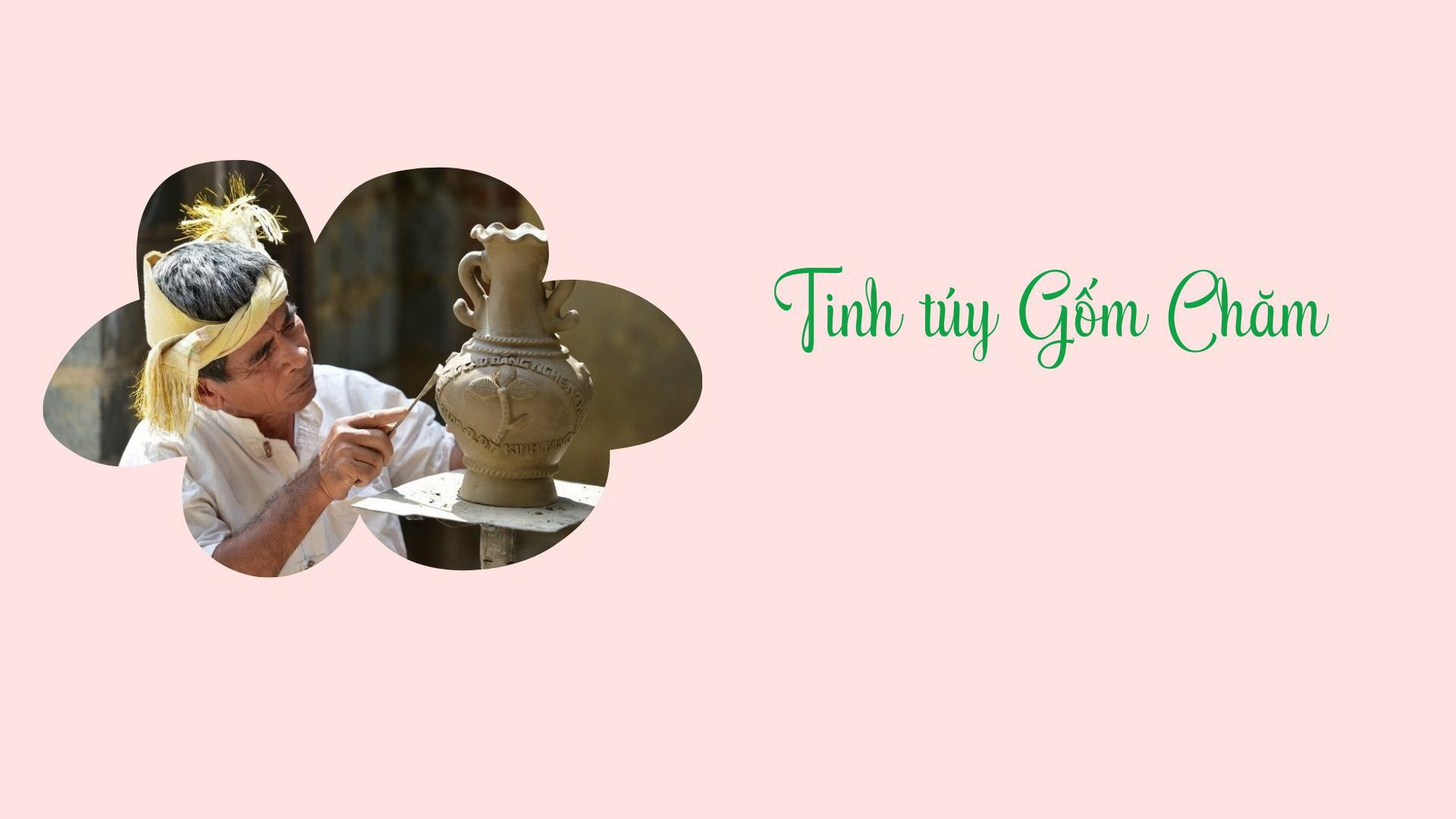
Cham pottery is currently present mainly in two villages: Ligok (Tri Duc, Binh Thuan province) and Hamu Crok (Bau Truc, Ninh Thuan province). Among them, existing from around the end of the 12th century until now, Bau Truc is considered one of the very few ancient pottery villages in Southeast Asia that still retains the primitive production methods from thousands of years ago.
The entire pottery making process of the Cham people exudes a unique artistic value. Thanks to that, despite the ups and downs in the development process, traditional Cham pottery still exists over time, preserving the quintessence and the pristine beauty of ancient pottery hundreds of years ago. That is the unique and everlasting value of Cham pottery.
“
Existing from around the end of the 12th century until now, Bau Truc is considered one of the very few ancient pottery villages in Southeast Asia that still retains the primitive production methods from thousands of years ago.
The entire pottery making process of the Cham people exudes a unique artistic value. Thanks to that, despite the ups and downs in the development process, traditional Cham pottery still exists over time, preserving the quintessence and the pristine beauty of ancient pottery hundreds of years ago. That is the unique and everlasting value of Cham pottery.
Nowadays, Cham people make pottery with traditional manual techniques and processes that have been maintained by Cham families here for many generations.
The traditional Cham pottery making process includes many stages and steps connected together. The first is the selection and collection of soil. The treatment of soil before making pottery determines the quality and performance of the product after firing.
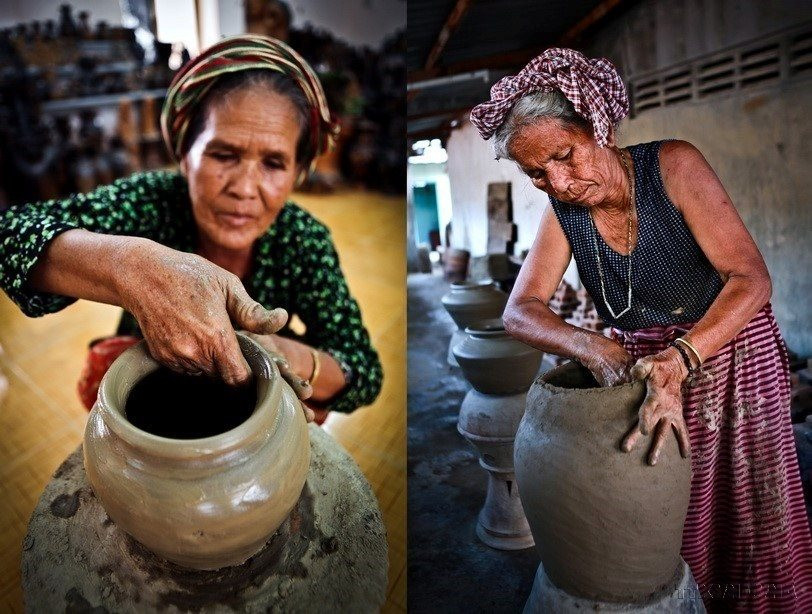
Artisans of Bau Truc Cham pottery village (Ninh Phuoc district, Ninh Thuan province). (Source: VNA)
After taking the soil, people break it into small pieces to filter out the impurities, taking only the yellow clay and then incubating it to keep it soft.
Taking a sufficient amount of soil, the Cham woman gently kneads it until it becomes soft, then places it on a large jar to create a block.
The ceramic products are completely handcrafted "Hand-shaped, no turntable." The artisan walks backward around the table to shape the ceramic. Because of walking around to shape the ceramic, the Cham artisans' way of shaping the ceramic is straight, different from the horizontal way in pottery villages that use turntables.
With skillful and skillful techniques, in just a few rounds, the worker has completed the block for the product. The shape of the product will be decided by the worker's backward movement around.
Next, they use a “circle” to brush around the body of the pottery, then use a wet cloth rolled up in their hands to rub the outside of the pottery until it is shiny. Next comes the step of decorating with patterns.
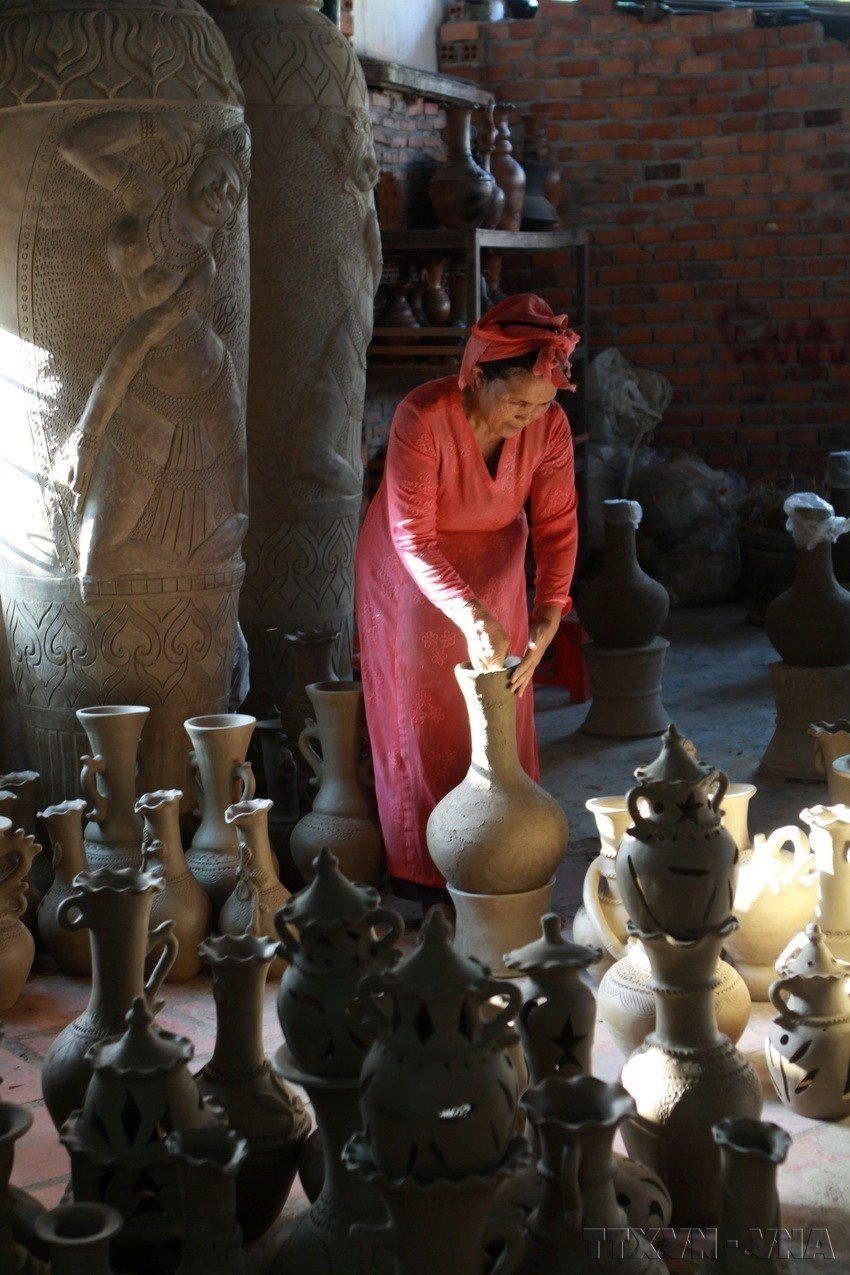
Bau Truc pottery (Phuoc Dan town, Ninh Phuoc district, Ninh Thuan province) carries the beauty of the land and the talent from the skillful hands of the Cham people. (Photo: Nguyen Thuy/VNA)
The skillful hands carve patterns on the ceramic body with themes of rivers, plants, or images of nature, the earth and the gods in the spiritual beliefs of the Cham people.
After shaping, the product is left in the shade for 24 hours, then rubbed thinly and dried for another 7 days until completely dry, then fired. Thanks to this, the product will be "cooked" thoroughly and will not crack.
The products are fired in the open air after being crafted. The difference of Cham pottery is that the products are fired completely in the open air. Depending on the conditions of sunlight and wind combined with the process and technique of spraying color (extracted from cashew nut oil, dong tree...), the products will have characteristic colors such as red-yellow, pink-red, gray-black, strange and beautiful brown streaks, clearly showing the ancient Cham culture.
Because they are made entirely by hand, no two Cham ceramic products are alike. Each product reflects the style, craftsmanship, ingenuity, and even the emotions and moods of the craftsman during the process of making the product.”
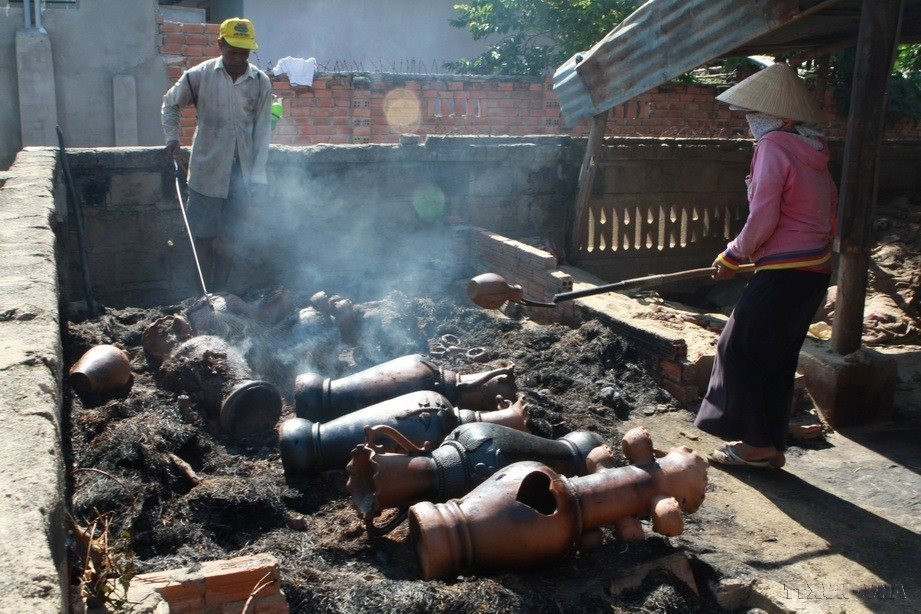
Bau Truc pottery products (Phuoc Dan town, Ninh Phuoc district, Ninh Thuan province) are fired in the open air at high temperatures for 5-6 hours. (Photo: Nguyen Thuy/VNA)
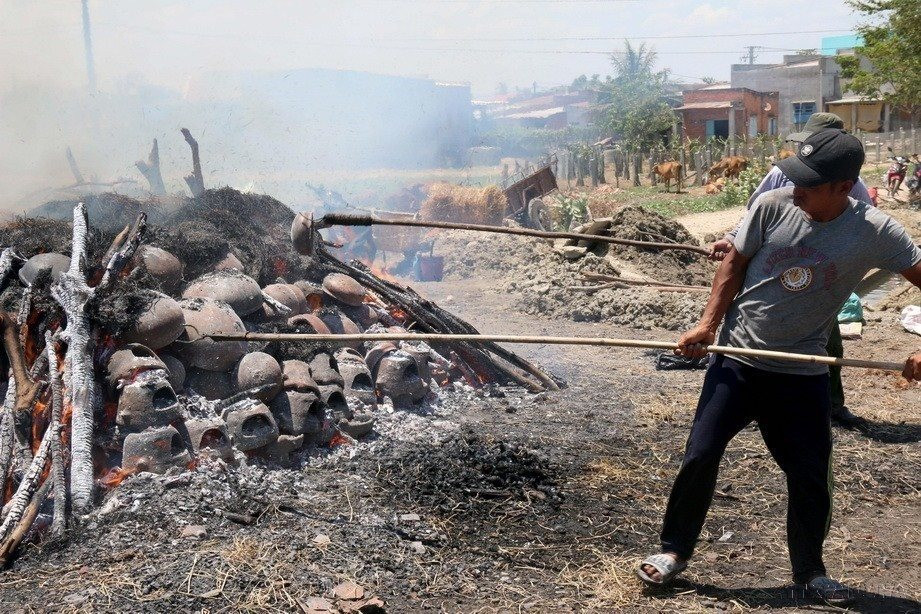
Binh Duc Cham Pottery Village (Phan Hiep Commune, Bac Binh District, Binh Thuan Province) is like a museum preserving the unique cultural features of the Cham people, the most unique of which is the craft of handmade pottery. (Photo: Nguyen Thanh/VNA)
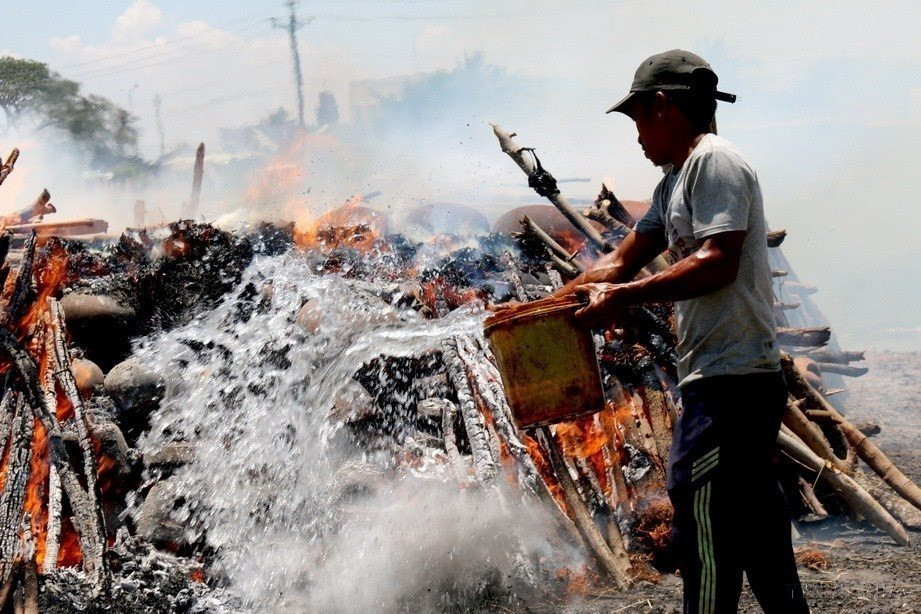
Binh Duc Cham Pottery Village (Phan Hiep Commune, Bac Binh District, Binh Thuan Province) is like a museum preserving the unique cultural features of the Cham people, the most unique of which is the craft of handmade pottery. (Photo: Nguyen Thanh/VNA)
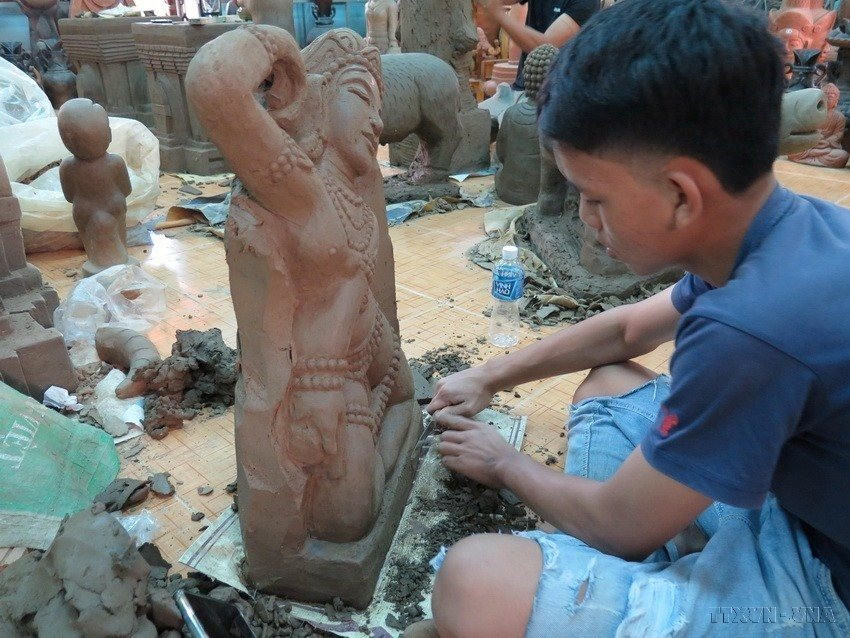
Cham people in Bau Truc pottery village (Ninh Thuan) do not use glaze but use wet cloth to smooth the pottery and use forest resin to enhance the color of the pottery. (Photo: Minh Hung/VNA)
The time it takes to fully bake a ceramic product depends on the quantity of ceramics. For some fine art products, artisans also use natural coloring methods such as sprinkling or spraying cashew nut water or star apple water - while art statues can be baked with rice husks or firewood to create black stains from the smoke.
In particular, an important characteristic of Cham pottery is the spiritual world of beliefs, customs and Cham culture expressed through pottery. In Bau Truc, we can easily see the soft shape and dance of Apsara, the dance of Shiva through statues or reliefs, linga-yoni genitals, male-female vases, Cham dances, saranai trumpet players... and other works simulating spiritual cultural life.

For centuries, the Cham people in Bau Truc village have preserved intact the traditional craft of their ancestors with the skills and secrets passed down from generation to generation. Therefore, this place is affectionately called the “living museum” of Cham pottery by researchers and domestic and foreign tourists.
Pottery making helps increase family income and preserve the traditional customs and cultural identity of the Cham people in Vietnam. However, despite many efforts to preserve it, the Cham pottery craft is still at risk of fading away due to the impact of urbanization on access to raw materials, slow adaptation to the market economy and the young generation's lack of interest in the craft.
Products of the ancient Cham pottery village of Bau Truc (Ninh Phuoc district, Ninh Thuan province). (Photo: Nguyen Thanh/VNA)“
Not only innovating production, Bau Truc Cham pottery village also found a new direction to promote products - developing community tourism.
To survive, Bau Truc pottery village has innovated its household pottery products, combined with the development of decorative pottery to create market appeal. With the idea of developing based on the Cham cultural foundation to maintain its own unique features while not being limited to them, Cham pottery artisans have developed new products combining Western and Vietnamese cultural elements into Bau Truc pottery products.
Along with changing designs and improving household ceramic products, Bau Truc pottery also promotes the development of decorative ceramics, fine art ceramics, and souvenir ceramics with aesthetic content and high economic value such as decorative ceramic lamps, night lamps, vases, water bottles, tea pots, vases, water towers, symbols of Western culture, Eastern culture, and Cham culture.
Not only innovating production, Bau Truc Cham pottery village also found a new direction to promote products - developing community tourism. Community tourism not only brings livelihood to the people but also contributes to protecting the environment, landscape and indigenous cultural values of Bau Truc village, as well as protecting the traditional craft of the Cham people from the risk of extinction.
Currently, Bau Truc pottery village is one of the famous tourist destinations of Ninh Thuan.
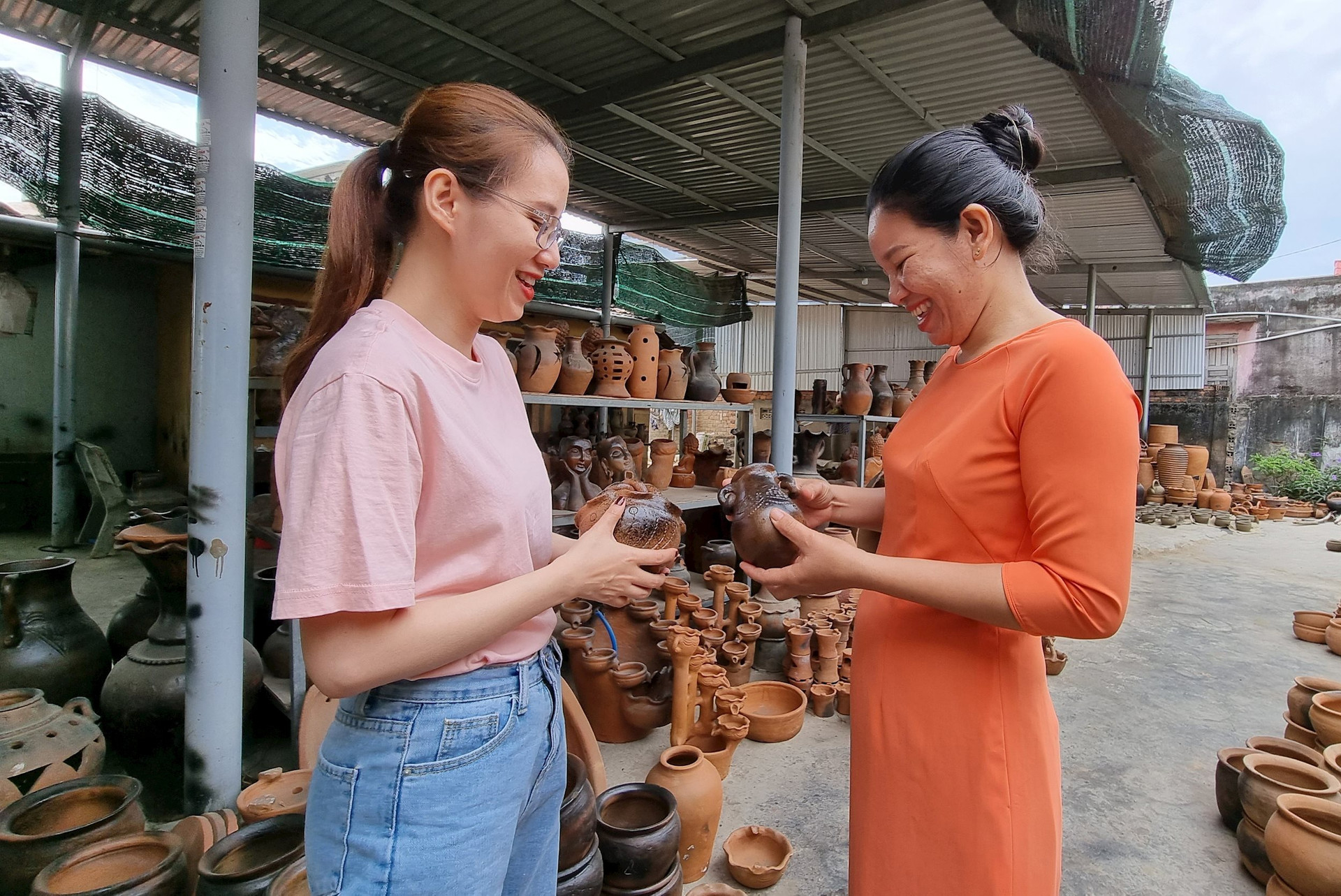
Ms. Dang Thi Minh Trong (in orange ao dai), owner of Hai Au handicraft pottery establishment, introduces Cham pottery products to tourists. (Photo: Nguyen Thanh/VNA)
Ms. Dang Thi Minh Trong, owner of Hai Au handicraft pottery in Bau Truc pottery village, shared that in the past, her family mainly produced household ceramics and worship items, mainly serving the Cham people in the locality and neighboring provinces. To meet the diverse needs of the market, her family has researched and developed a line of fine art ceramics for interior and exterior decoration, wall tiles, relief statues, bonsai pots, feng shui pots, vases, kilns, jars, ceramic lamps, etc.
“We research and combine Cham culture with elements of other cultures to design and produce fine art ceramics with unique and diverse designs and decorative patterns, ensuring quality to serve the market. In addition, we build the production facility into a destination for tourists to visit and experience the pottery making profession. Currently, the facility sells directly and on social networking platforms, selling thousands of ceramic products of all kinds every month, the cheapest products cost 10,000 VND to products costing millions of VND, depending on the size and type of ceramic,” Ms. Dang Thi Minh Trong shared.
There are many young craftsmen who are quick to find new directions like Ms. Trong in Bau Truc village now, and ceramic artisans like Ms. Dang Thi Hang, who is in her seventies, are also passionately creating new designs with the young generation, passing on the secrets of the craft to their children. Ms. Hang confided: “The Cham people's pottery craft is passed down from mother to child. I started making pottery at the age of 18 and now, at the age of 73, I still make pottery. I always teach my children and grandchildren to be patient, learn and create new, unique designs to serve customers.”
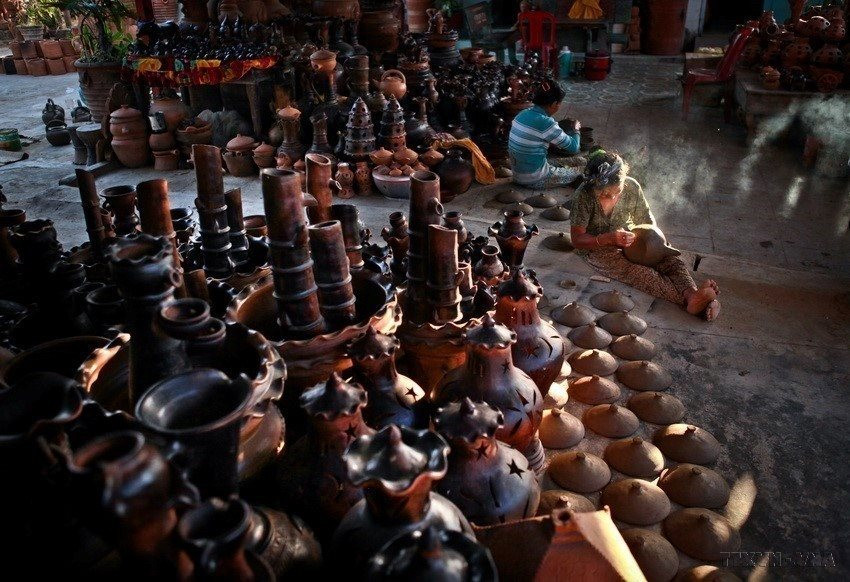
.jpg)
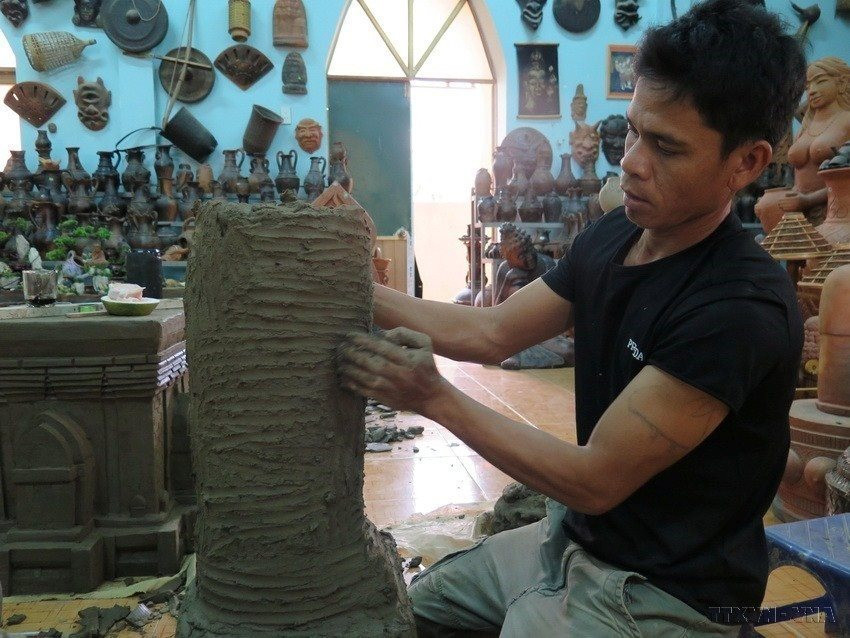
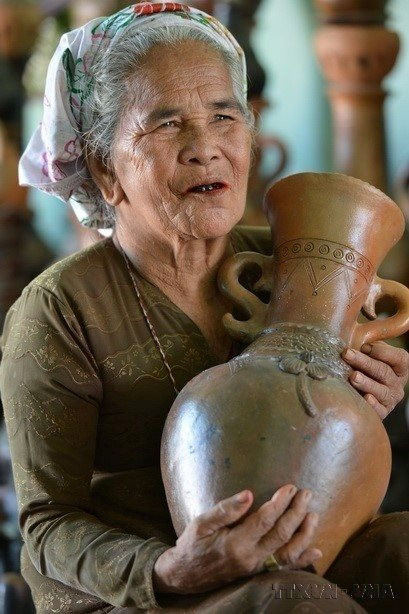


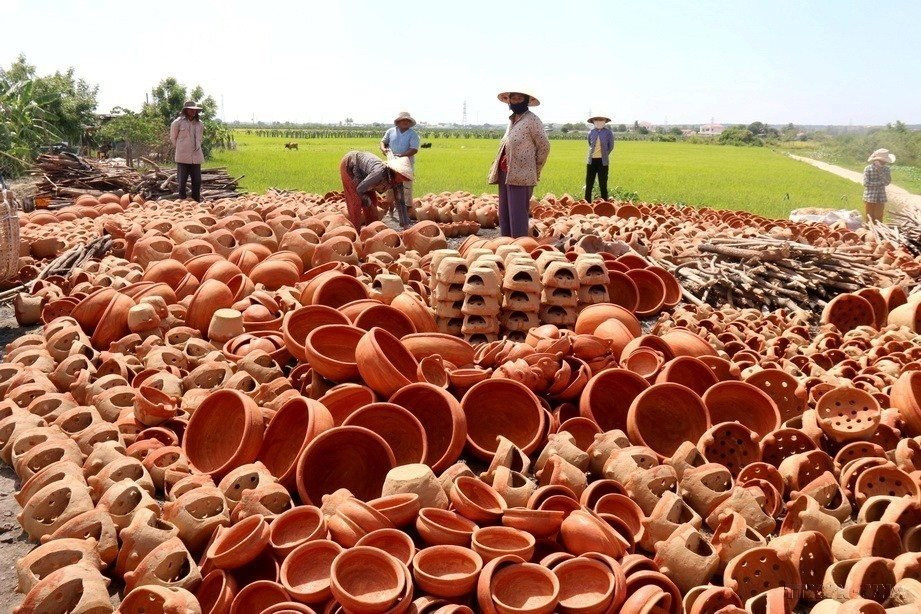
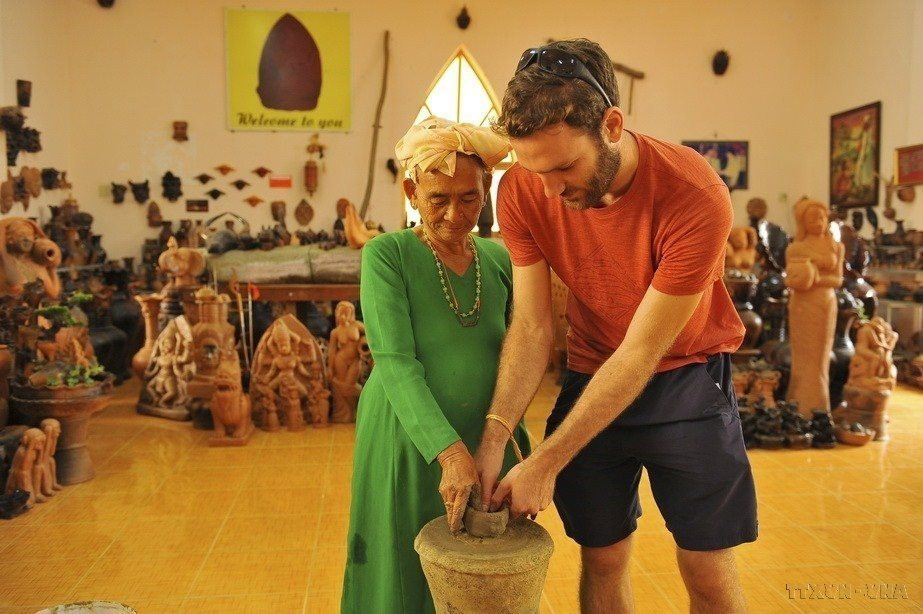
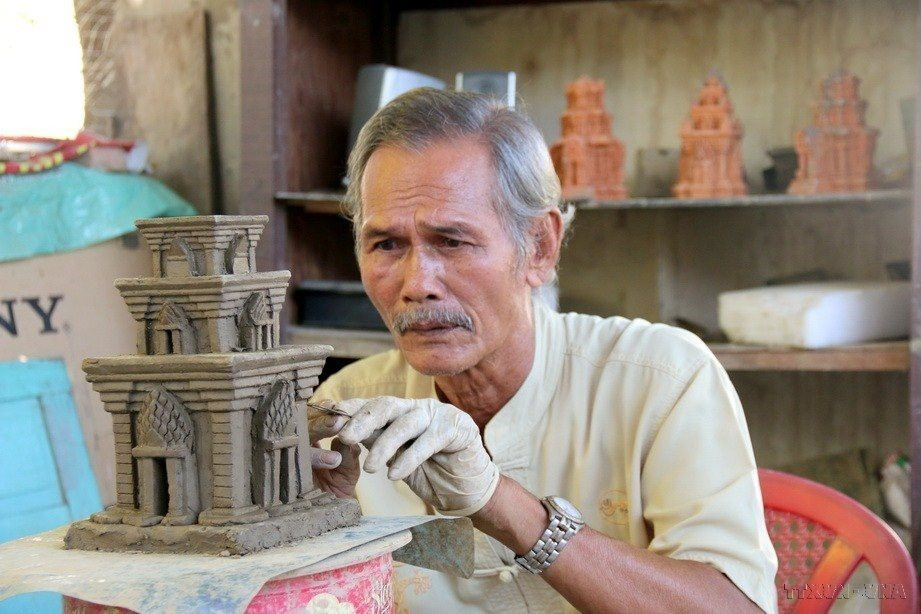
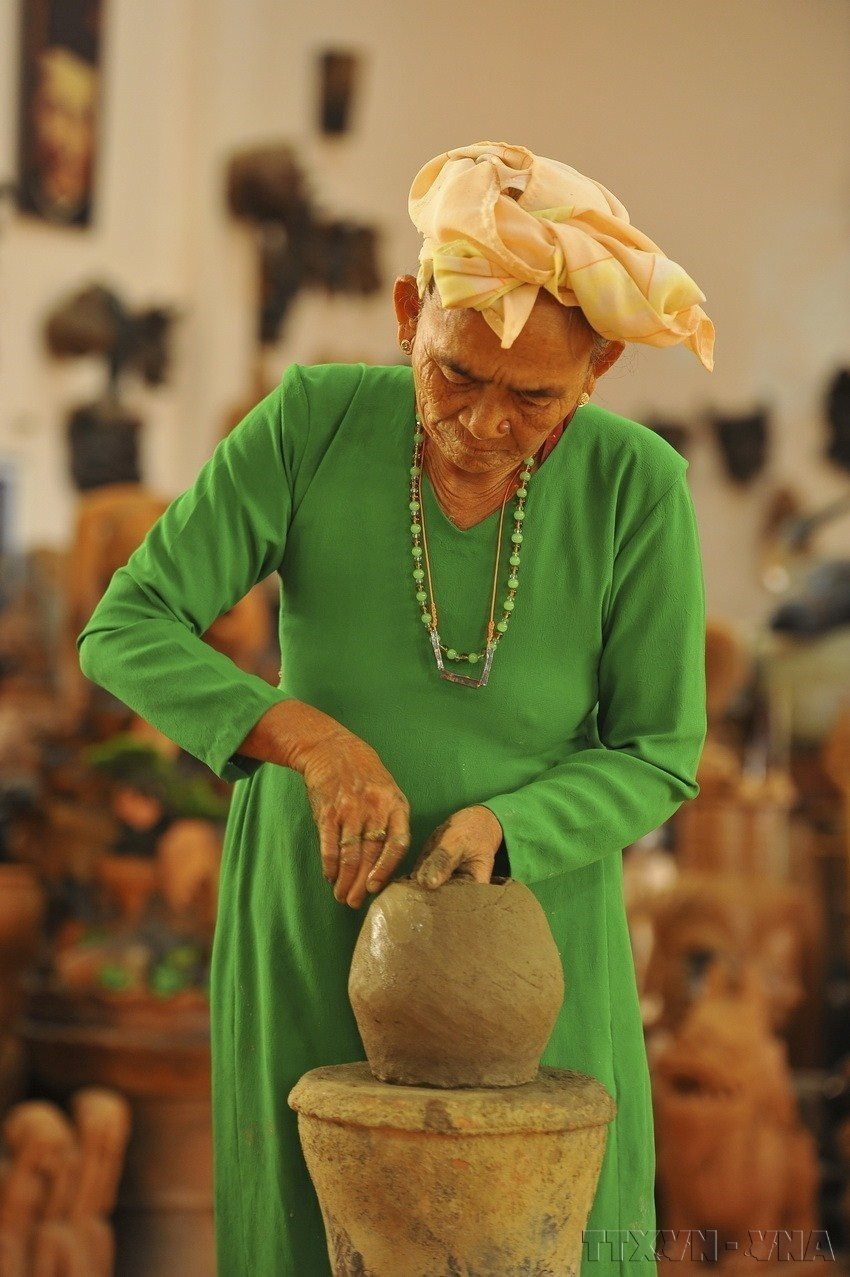

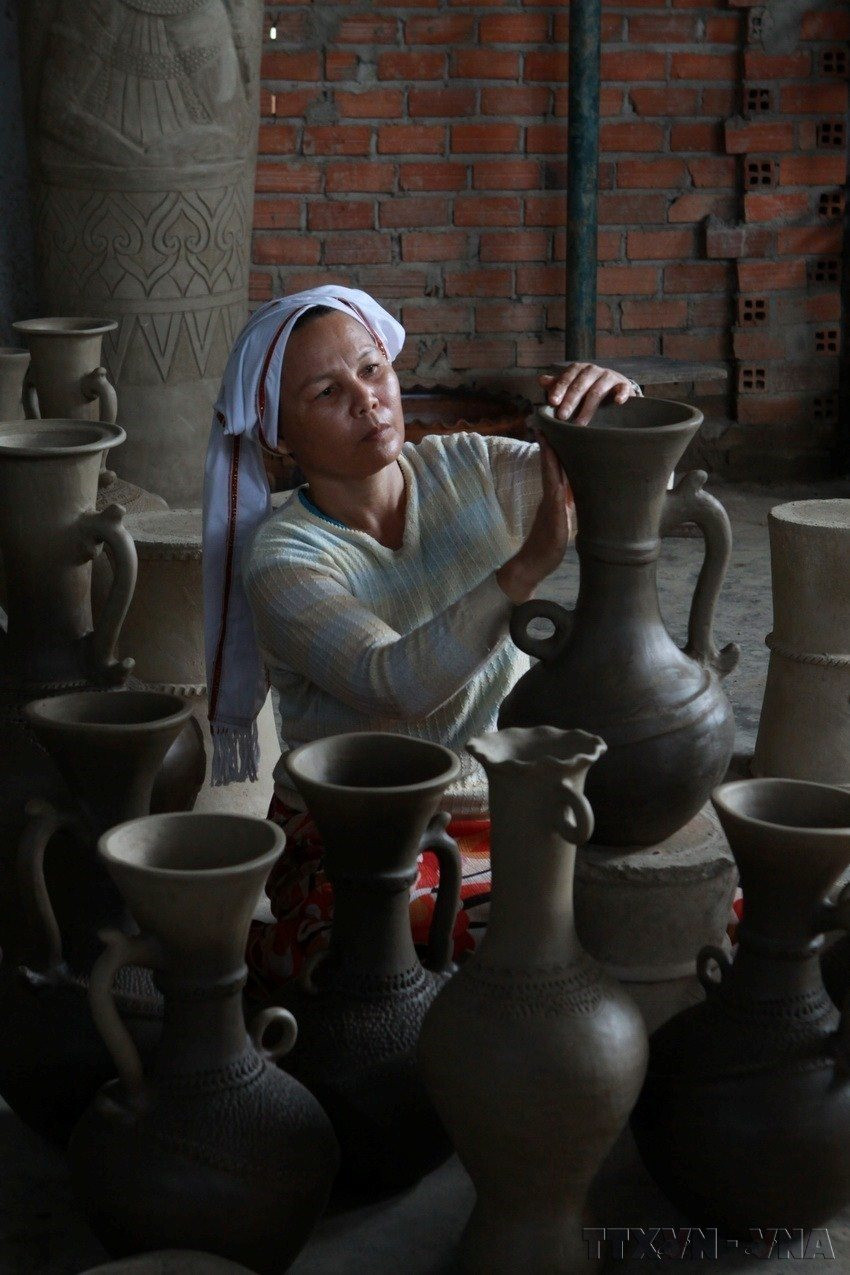
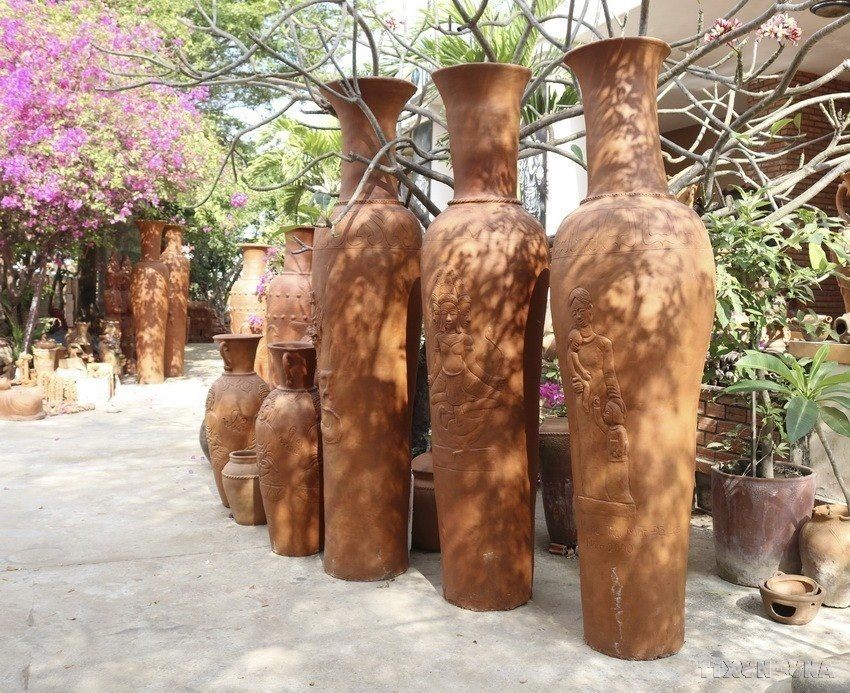
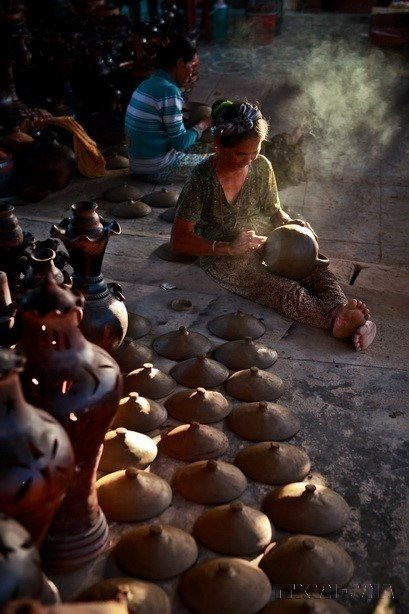
Previously, the pottery making profession in Bau Truc village was only for women, men only went to collect firewood, dig soil, carry straw to help when firing pottery. Recently, the market has favored large-sized ceramic products, weighing tens of kilograms, even products weighing a ton, so in Bau Truc village, there are more and more young men, middle-aged men learning the craft and making many products.
Bau Truc village currently has 663 households with over 3,000 people (Cham people account for over 90%), of which about 250 households are involved in pottery making, with 2 cooperatives and 11 establishments specializing in pottery production and trading.
Mr. Phu Huu Minh Thuan, Director of Bau Truc Cham Pottery Cooperative, said that up to now, the Cooperative has 54 members participating in the production and trading of pottery. It can be said that Bau Truc Cham pottery has established a position in the market with many products used in the daily life of not only the Cham people but also many other ethnic groups in all localities across the country.
Mr. Nguyen Van Hoa, Director of the Department of Culture, Sports and Tourism of Ninh Thuan province, said that in order to preserve and promote the value of this heritage, the Department will first advise the Provincial People's Committee to issue a Project to preserve and promote the value of the intangible cultural heritage of the Cham people's pottery art.
In the action program, the Department will coordinate with relevant parties to promote propaganda and raise awareness among people, especially Cham people, in preserving and promoting the value of pottery art heritage. At the same time, the Department will coordinate and guide localities to develop an investment plan for infrastructure in Bau Truc pottery village associated with community tourism development to promote the value of this heritage.
To serve tourists, Bau Truc pottery village has established a community tourism development board with over 60 members, with full professional groups such as: pottery making, cuisine, arts, traditional musical instruments... Thanks to its professional activities, Bau Truc village community tourism development board not only serves tourists visiting the craft village, but is also invited to perform and promote Cham pottery products in provinces and cities such as Hanoi, Quang Nam, Da Nang, Ho Chi Minh City, Binh Thuan, Lam Dong.

At the ceremony to receive UNESCO's recognition of Cham ceramic art on June 15, the Ministry of Culture, Sports and Tourism also announced the National Action Program to protect and promote the value of "Cham ceramic art."
According to the program, the Ministry of Culture, Sports and Tourism calls on ministries, departments, branches, and People's Committees at all levels to organize urgent protection activities for the Cham pottery heritage: support and encourage artisans and communities to teach knowledge, techniques, and pottery skills, especially to the younger generation. Develop a planning plan, expand raw material sources, and preserve pottery villages; mobilize capital sources to protect and promote heritage values.
Continue to research, create, and design new models based on the values of Cham ceramic art heritage; expand the ceramic consumption market to improve the community's life.
The Ministry also promotes the work of inventorying, collecting, and documenting the Cham people's pottery heritage; building a database to introduce and promote Cham pottery. Building and developing the community's Cham pottery museum, organizing exhibitions and demonstrations of pottery making in community museums and provincial museums.
Continue to propose to confer the honorary state titles of People's Artisan and Meritorious Artisan to practitioners who have made many contributions to preserving, practicing, teaching, protecting and promoting the values of Cham Ceramic Art Heritage; honor and reward potters and individuals who have made many contributions to protecting the heritage.
Support the community in restoring festivals and rituals related to Cham pottery making; publish research works on Cham pottery making to disseminate knowledge and understanding of Cham pottery.
The Ministry coordinates with central and local media agencies, specialized agencies, and research institutes to organize programs to introduce and promote the value of Cham pottery heritage in various forms to domestic and foreign audiences. Periodically organize Cham pottery festival on the occasion of Kate festival; develop cultural heritage tourism./.
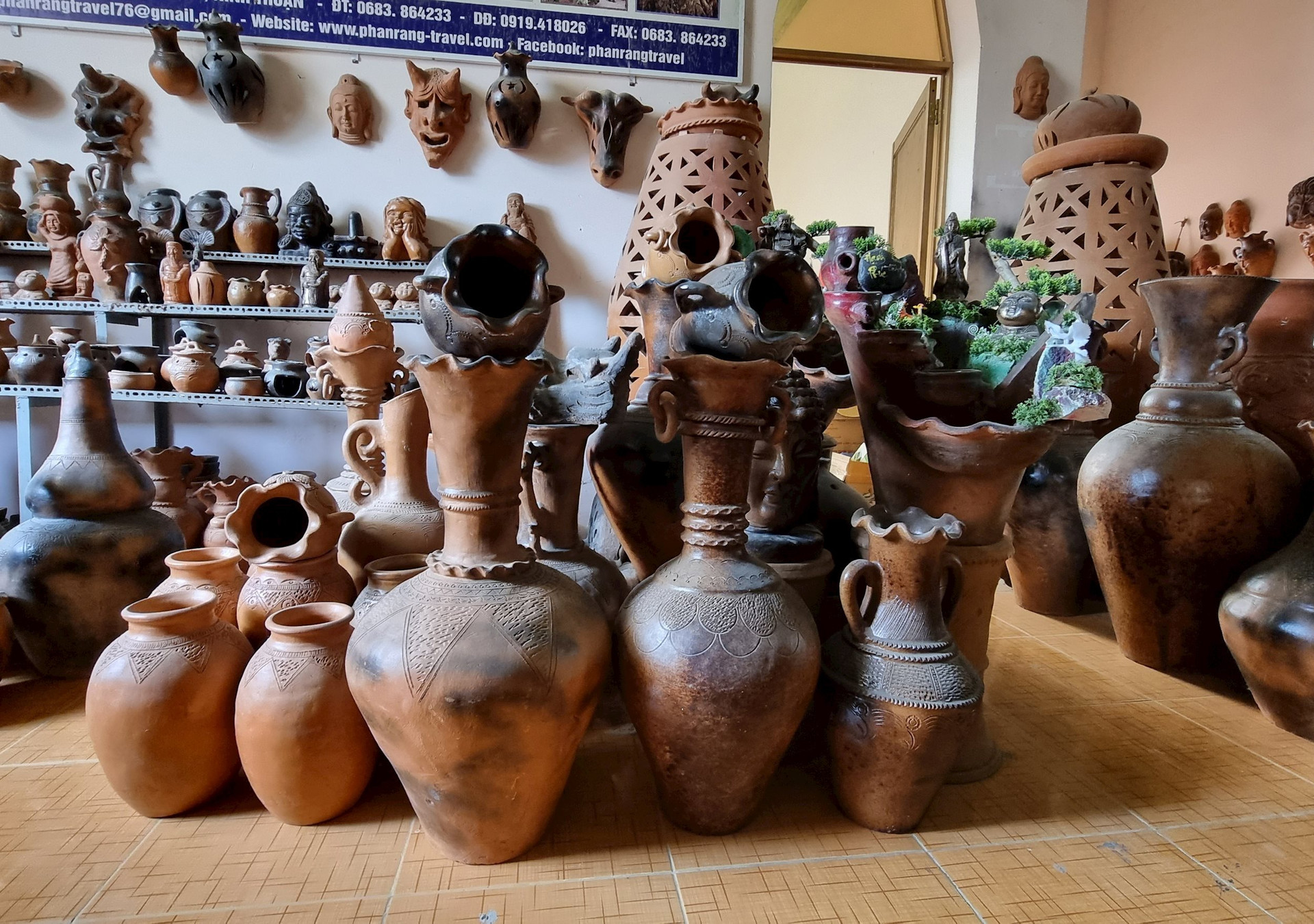
Ceramic products of Bau Truc Cham Ceramic Cooperative (Phuoc Dan town, Ninh Phuoc district, Ninh Thuan province. (Photo: Nguyen Thanh/VNA)
Source: https://mega.vietnamplus.vn/gom-cham-nghe-thu-cong-dau-tien-cua-viet-nam-duoc-unesco-ghi-danh-5436.html



![[Photo] Binh Trieu 1 Bridge has been completed, raised by 1.1m, and will open to traffic at the end of November.](https://vphoto.vietnam.vn/thumb/1200x675/vietnam/resource/IMAGE/2025/10/2/a6549e2a3b5848a1ba76a1ded6141fae)








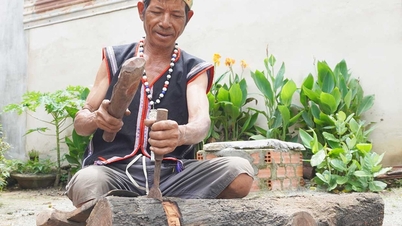



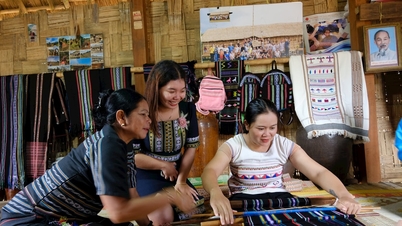
































































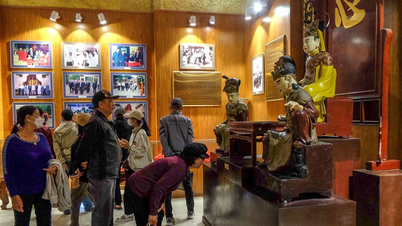
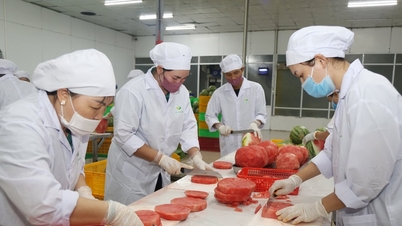

















Comment (0)